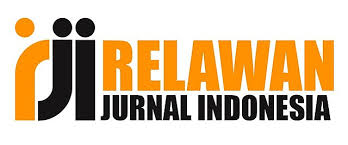The Role of Short Video Media in Developing Arabic Listening Skills: A Linguistic Perspective
DOI:
https://doi.org/10.58223/al-irfan.v8i1.410Keywords:
Arabic Learning, Maharah al-Istima', short video media, linguistic approach, pesantren innovationAbstract
Listening comprehension (maharah istima’) is a fundamental skill in Arabic language learning, yet its mastery often becomes a challenge in pesantren environments that still rely heavily on conventional teaching methods. This study aims to explore the implementation of short video media as an innovative approach to enhance istima’ skills among students at Pesantren Teknologi Majapahit Mojokerto. Employing a qualitative approach with a case study design, data were collected through classroom observations and in-depth interviews with both teachers and students. The findings reveal that the use of short video media positively influences students’ listening skills, particularly in improving pronunciation accuracy, intonation, and contextual understanding. In addition, the integration of short videos fosters greater enthusiasm, motivation, and active participation in the learning process, which are often lacking in traditional pedagogical practices. Despite these benefits, several challenges were identified, including limited technological infrastructure, students’ difficulties in comprehending non-standard Arabic dialects, and restricted vocabulary mastery. These limitations suggest the need for careful content selection, adequate facilities, and continuous teacher training to optimize the effectiveness of short video-based instruction. The contribution of this research lies in highlighting the pedagogical potential of short video media as a practical and adaptive tool for Arabic language learning in pesantren contexts, bridging traditional methods with contemporary technological innovations. Ultimately, this study underscores the importance of integrating media-based approaches to ensure that Arabic learning remains effective, contextual, and aligned with the demands of modern education.
References
Annisa, M. N., & Safii, R. (2023). Analisis Kebutuhan Belajar Bahasa Arab Sebagai Bahasa Asing Dalam Konteks Pendidikan Tinggi. Eloquence Journal of Foreign Language, 2(2), 313–328. https://doi.org/10.58194/eloquence.v2i2.861
Faiz, M. N., & Afrita, J. (2024). Tantangan Dan Strategi Pemahaman Bahasa Arab Untuk Pendidikan Generasi Z: Analisis Dan Prospek Masa Depan. Jurnal Pendidikan Indonesia, 5(4), 156–164. https://doi.org/10.59141/japendi.v5i4.2749
Holimi, M., & Faizah, N. (2021). Pembelajaran Mufrodat Dengan Metode Bernyanyi Di Gubuk Baca Kalpataru Dusun Bendrong. Muhadasah Jurnal Pendidikan Bahasa Arab, 3(2), 120–138. https://doi.org/10.51339/muhad.v3i2.369
Inayati, A. A. U. (2024). Implementasi Media Pembelajaran Berbasis Ict Pada Mata Kuliah Pembelajaran Bahasa Arab Mi. Wjpe, 3(2). https://doi.org/10.61798/wjpe.v3i2.118
Munir, H. M. (2023). Evaluasi Kurikulum Bahasa Arab Di SMP It Jaisyul Qur’an Bandung. Setyaki Jurnal Studi Keagamaan Islam, 1(2), 1–10. https://doi.org/10.59966/setyaki.v1i2.196
Muttaqin, J., Shodiq, M. F., & Qosim, M. N. (2023). Metodologi Pengajaran Kaidah Bahasa Arab: Implementasi Metode Induktif dan Deduktif di MTs Negeri 1 Sragen. EDUKATIF : JURNAL ILMU PENDIDIKAN, 5(4), 1790–1798. https://doi.org/10.31004/edukatif.v5i4.4894
Perwira, A. Y., Faridah, E., Apriliani, P., & Mubarok, A. M. (2023). Telaah Kurikulum Bahasa Arab Di Ma Al-Hidayah Depok. Jurnal Kajian Islam Modern, 10(01), 28–33. https://doi.org/10.56406/jkim.v10i01.320
Sanah, S., Odang, O., & Lutfiyani, Y. (2022). Model Pengembangan Keterampilan Berbahasa Arab Di Pesantren. Ta Lim Al- Arabiyyah Jurnal Pendidikan Bahasa Arab & Kebahasaaraban, 6(2), 271–293. https://doi.org/10.15575/jpba.v6i2.20164
Hamid, F. H. S., Fauzi, F. A., Hafizah, A., & Syahid, A. (2025). The correlation between exposure to short-form content on TikTok and Instagram Reels and EFL listening skills among high school students. JIPIS, 34(1), 16–23. https://doi.org/10.33592/jipis.v34i1.6251
Mokoginta, S., Rorimpandey, R., & Lolowang, I. S. (2025). The effectiveness of TikTok videos in improving students’ listening comprehension at SMP Negeri 1 Tondano. JoTELL: Journal of Teaching English, Linguistics, and Literature, 3(2). https://doi.org/10.36582/jotell.v3i2.8596
Gusmareky, E., & Tambusai, A. (2023). Analysis of using TikTok to develop students’ listening skill at MTs YPI Lubuk Pakam. Jurnal Pendidikan Tambusai, 7(3), 29878–29881. https://doi.org/10.31004/jptam.v7i3.11808
Conde-Caballero, D., Castillo-Sarmiento, C. A., Ballesteros-Yánez, I., et al. (2024). Microlearning through TikTok in higher education: An evaluation of uses and potentials. Education and Information Technologies, 29(2), 2365–2385. https://doi.org/10.1007/s10639-023-11904-4
Santi, R. N., Situmorang, R., & Iriani, T. (2024). Potensi model microlearning sebagai strategi pembelajaran inovatif untuk bahan pembelajaran: Systematic review. Didaktika: Jurnal Kependidikan, 13(4), 4623–4634. https://doi.org/10.58230/27454312.1281
Veletsianos, G., Houlden, S., Hodson, J., Thompson, C. P., & Reid, D. (2022). An evaluation of a microlearning intervention to limit COVID-19 online misinformation. Journal of Formative Design in Learning, 13–24. https://doi.org/10.1007/s41686-022-00067-z
Fitria, T. N. (2022). Microlearning in teaching and learning process: A review. Cendekia: Jurnal Ilmu Sosial, Bahasa dan Pendidikan, 2(4), 114–135. https://doi.org/10.55606/cendikia.v2i4.473
Díaz Redondo, R. P., Caeiro Rodríguez, M., López Escobar, J. J., & Fernández Vilas, A. (2021). Integrating micro-learning content in traditional e-learning platforms. Multimedia Tools and Applications, 80(2), 3121–3151. https://doi.org/10.1007/s11042-020-09523-z
Mohd Jelani, N. A., & Boers, F. (2018). Examining incidental vocabulary acquisition from captioned video: Does test modality matter? ITL – International Journal of Applied Linguistics, 169(1), 169–190. https://doi.org/10.1075/itl.00011.jel
Downloads
Published
How to Cite
Issue
Section
License
Copyright (c) 2025 Muhammad Odi Tondi Nasution, Nur Hasaniyah, Abdul Muntaqim Al Anshory

This work is licensed under a Creative Commons Attribution 4.0 International License.
Lisensi :
Al-Irfan: Journal of Arabic Literature and Islamic Studies is published under conditions Creative Commons Attribution 4.0 International License / CC BY 4.0 This license permits anyone to copy and redistribute this material in any form or format, modify, modify, and make derivative works of this material for any purpose, including commercial purposes, so long as they credit the author for the original work.











